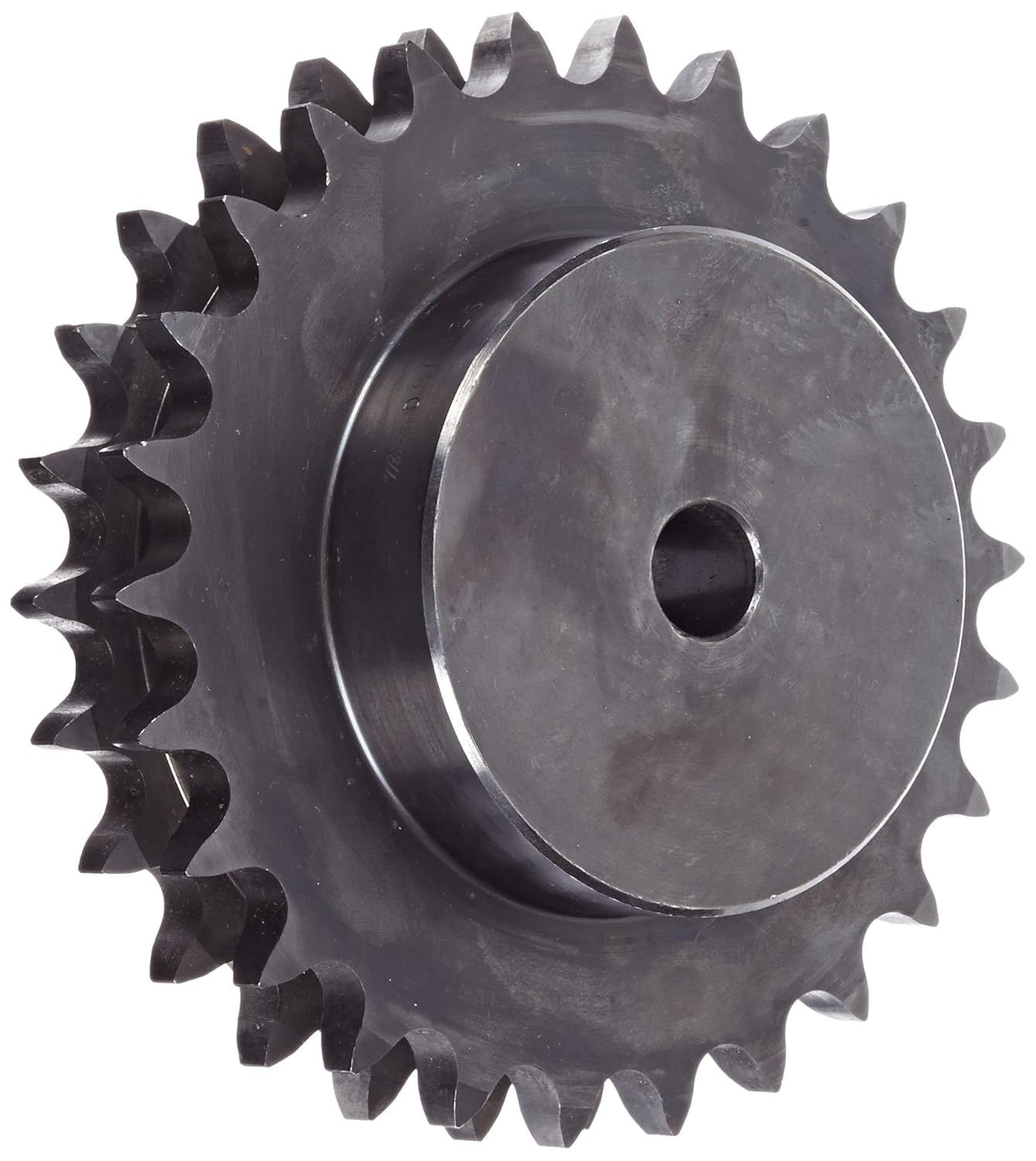Product features
For use with 80-2 chain, 1″ pitch for driver or driven sprocket applications
Double type B sprocket provides a stable and protected attachment to the shaft, and can be modified to suit a wide variety of applications requiring two chains
Shaft diameter choices range from 1 to 1-1/2″ for a variety of applications
Varying amounts of teeth and pitch diameter sizes offer application flexibility
High carbon steel for strength and durability
Product description
The Martin dual, also called a duplex, type B sprocket is ideal for use with the series 80-2 chain with 1” pitch for driver or driven sprocket applications. Varying amounts of tooth and pitch diameters provide application flexibility. Made from high carbon steel, it has high strength and durability. Multiple chain capability permits more power at higher operational speeds with greater load capacity.
Type B sprockets have a hub extension using one side to supply stability, and invite for the utilization of full-depth keyways and regular setscrews to attach the sprocket. They can also accommodate an array of shafts. The double style accepts two chains side-by-side.
The options because of this class of sprocket are: number of teeth from 10 to 95; outside diameter from 3.680 to 30.830”; share bore size  from 1 to 1-1/2”; maximum bore size from 1-1/2 to 4”; hub diameter from 2-9/16 to 6”; size through bore from 2-3/4 to 4-1/4”; and approximate weight from 3.6 to 165 lb. The facial skin width (not including the hub) is 1.710”. The chain row thickness is definitely 0.557” nominal. Hubs with a diameter size of 2-9/16” possess a recessed groove for chain clearance. Maximum bores will accommodate standard keyseat and setscrew over keyseat. Slightly bigger bores are possible with no keyseat, shallow keyseat, or setscrew at angle to keyseat. All Martin sprockets satisfy or exceed ANSI requirements.
from 1 to 1-1/2”; maximum bore size from 1-1/2 to 4”; hub diameter from 2-9/16 to 6”; size through bore from 2-3/4 to 4-1/4”; and approximate weight from 3.6 to 165 lb. The facial skin width (not including the hub) is 1.710”. The chain row thickness is definitely 0.557” nominal. Hubs with a diameter size of 2-9/16” possess a recessed groove for chain clearance. Maximum bores will accommodate standard keyseat and setscrew over keyseat. Slightly bigger bores are possible with no keyseat, shallow keyseat, or setscrew at angle to keyseat. All Martin sprockets satisfy or exceed ANSI requirements.
A sprocket is a wheel with tooth around the perimeter that meshes with a chain, track, or additional perforated or indented material. Unlike gears that mesh with another equipment, sprockets mesh with a chain, which then interacts with another sprocket. Gears can be utilized to transmit power around a part, based on how they can fit jointly. Sprockets with chains only work in directly lines. Some common benefits of chain-drive systems consist of minimal slippage, a set ratio between rotating shafts, and versatility with many different chain attachments and sprocket material selections. An example of a power transmission program is a standard bicycle, that includes a sprocket and a chain to deliver power from the rider’s legs to the tires making the bike move.
Martin Sprocket & Gear manufactures power transmission and conveying items. The company was founded in 1951 and is headquartered in chain sprocket Arlington, TX. Martin provides tools that meet American National Standards Institute (ANSI), Nationwide Aerospace Regular (NAS), and Deutsches Institut für Normung (DIN) standards.